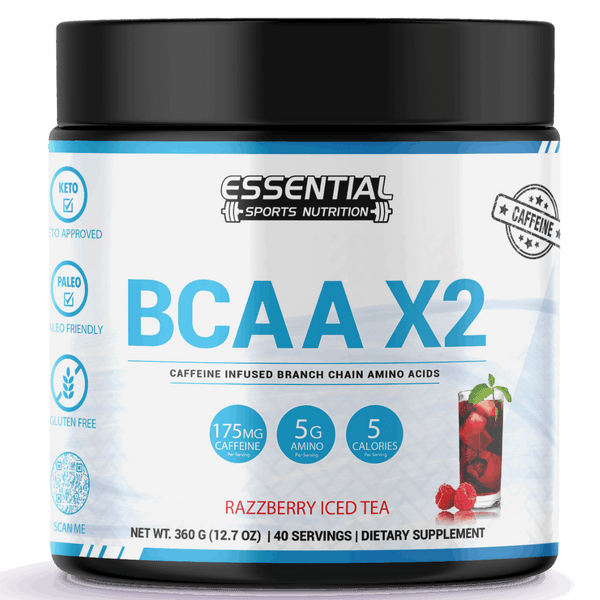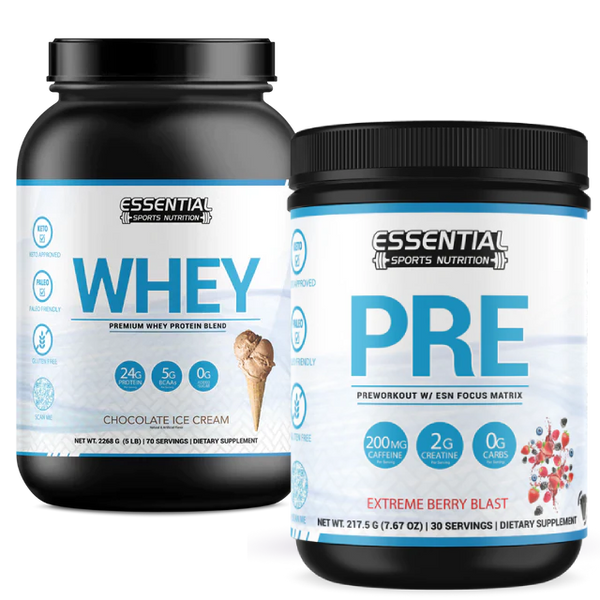Eliminate Wrist Pain: Expert Hacks for Push Ups and Planks
Pushing yourself to achieve your fitness goals is commendable, but it shouldn't come at the cost of your comfort or safety. A common issue many face during their workouts, especially when doing push-ups, is wrist pain.
This discomfort can put a damper on your motivation and might even lead to more severe problems if ignored.
Interestingly, keeping the wrists as straight as possible during exercises like chest presses with a barbell can greatly reduce the risk of experiencing wrist pain during push-ups.
In this article, we'll explore five effective ways to prevent wrist discomfort while maintaining an active lifestyle focused on strength training. We aim to provide you with practical steps that can ease your workout routine and keep you moving forward without unnecessary pain.
Key Takeaways
- Start with lighter workouts and slowly increase intensity to let your wrists adjust. Adding wrist-strengthening exercises like curls can prevent pain.
- Keep elbows aligned with shoulders during push-ups. Adjusting hand position, using cushions, or widening grip can reduce stress on wrists.
- Regularly stretching and strengthening your wrists helps avoid discomfort during push-ups. Simple exercises can make a big difference in flexibility and strength.
- Explore alternatives like push-up bars, wall push-ups, or dumbbell chest presses if traditional push-ups cause wrist pain. These options still build upper body strength without the strain.
- Push-up modifications ensure you continue building muscle while protecting your wrists from injury or strain.
Understanding Wrist Pain During Pushups

Wrist pain during pushups often happens because we overload our bodies more than they're ready for. This can strain the wrist joints and cause discomfort. Our wrists aren’t made to take all our weight at once, especially in such a bent position.
The pain might also come from poor mobility in our arms and shoulders. Without enough flexibility, doing pushups forces our wrists into awkward angles, stressing them further.
Poor posture plays a big role too. Keeping your shoulders, elbows, and wrists in line helps protect your joints during exercise. But if this alignment is off, it can put extra pressure on the wrist joint and tissues around it like the triangular fibrocartilage complex or median nerve near your thumb side of the wrist area contributing to soreness or injury.
Strengthening exercises specifically targeting arm muscles help prevent these issues by keeping your body properly supported throughout each movement.
Five Solutions to Prevent Wrist Pain
If you love doing push-ups but hate the wrist pain, we've got some smart fixes for you. These strategies aim to protect your wrists and keep you pushing up without a hitch.
Gradually Increase Intensity
Starting with lighter workouts is key to avoiding wrist pain during push-ups. This means doing fewer repetitions and using less force at first. Over time, add more repetitions gradually.
This approach helps your wrists get used to the stress of push-ups without overwhelming them.
Adding variety also matters. Include exercises that strengthen your wrists in different ways. Try wrist curls or grip strengthening activities using hand grippers. Mixing these into your routine builds stronger wrists, making them better prepared for intense push-up sessions.
Keep increasing the difficulty as your wrist strength improves, but do it slowly to prevent injury.
Adjust Position of Elbows
Keeping elbows aligned with shoulders and palms prevents wrist pain during push-ups. Many beginners fail to align these parts correctly, leading to discomfort. Make sure your elbows don't flare out too widely or tuck in too tightly as you lower yourself to the ground.
This proper alignment helps your joints stay happy and reduces stress on your wrists.
Creating a strong base for push-ups involves mindful placement of your upper limbs. Your body should form a straight line from head to toes, engaging core muscles for additional support.
Adjusting elbow positioning not only enhances stability but also ensures efficient force distribution throughout the exercise, minimizing risk of injury, especially sprained wrists or repetitive strain injuries (RSI).
Use a Cushion or Support Under Hands
Placing a cushion or support under your hands can make push-ups less painful for your wrists. This method helps by reducing the pressure on your wrists, making it easier to maintain a neutral position.
You can use a folded towel, yoga mat pieces, or specially designed pads that offer extra comfort and protection. This simple change allows you to focus more on strengthening your chest and arms without worrying about wrist discomfort.
Experts suggest this approach especially for those with previous injuries or conditions like carpal tunnel syndrome. The added padding keeps the wrists from hyperextending, which is crucial in avoiding further strain or injury.
It also encourages better form by promoting wrist stability during the exercise, leading to more effective workouts over time. Whether you're looking to build strength safely or manage existing pain, using some form of cushioning under the hands is an accessible solution worth trying.
Widen Hand Placement
Widening your grip during push-ups can ease the pressure on your wrists. This adjustment changes how much of your body weight your wrists have to support. With hands set wider than shoulder-width, there's less stress and a more balanced distribution of weight across your shoulders and chest muscles.
Using pushup grips or slightly larger hand-held weights as supports allows for a broader stance. This setup not only protects the wrists by keeping them in a neutral position but also boosts core engagement and strengthens the upper body more effectively.
Keep this practice regular to reduce wrist strain and improve overall push-up mechanics.
Regular Wrist Stretching and Strengthening Exercises
Doing wrist stretches and exercises often can help avoid pain during push-ups. Workouts that make your wrists stronger improve your form, cutting down on discomfort. Start with holding your arms out in front of you and gently pulling back on each finger towards your body to stretch the front of your wrists.
Next, place your palms together in a prayer position and slowly lower them towards your waist until you feel a stretch.
For strengthening, try using a lightweight or resistance band. Roll up a towel and grip it tightly for a few seconds at a time to build grip strength. These actions boost wrist flexibility and power, making push-ups easier over time.
Keep these exercises simple; doing them regularly is key to seeing benefits without adding strain to the wrist joints.
Modifications and Alternatives for Pushups
For those finding traditional push-ups tough on their wrists, there are other ways to build upper body strength. Exploring push-up bars, wall exercises, or chest-enhancing workouts can offer relief and progress.
Using Pushup Bars or Dumbbells
Using push-up bars or weights brings a big change to reducing wrist pain during push-ups. These tools keep the wrists straight, which lessens pressure on your hands and joints. You can find these items easily online or at sports stores.
They offer a great way for anyone looking to engage their chest, triceps, and core muscles without stressing their wrists.
Switching to push-up grips or holding onto weights also allows for deeper movement in your exercises. This not only helps in building more muscle but ensures your posture is correct throughout the exercise.
The adjustment eases strain and supports better wrist health while enhancing strength across upper body muscles.
Wall or Incline Bench Pushups
Wall or incline bench pushups are great for people who feel pain in their wrists during standard pushups. These types of pushups put less stress on your wrists and shoulders, making them a good choice if you're looking to avoid discomfort.
To do a wall pushup, stand facing a wall and place your hands flat against it at shoulder height, then push your body towards the wall and back. If you prefer incline bench pushups, find a stable surface like a gym bench; place your hands on the edge of it and perform the pushup motion.
Incline bench pushups not only help with wrist pain but also allow you to work on upper body strength without straining your joints too much. You can adjust how hard these exercises are by changing how high the platform is for your hands or how far away you stand from the wall.
This makes them suitable for all fitness levels, from beginners to more advanced athletes looking to maintain healthy joints while still building strength in their chest, arms, and core muscles.
Strength-Building Alternatives Like Dumbbell Chest Press or TRX Chest Fly
Dumbbell chest presses offer a great way to build strength without straining your wrists. You lie on your back, push weights up from your shoulders, and bring them down slowly. This move targets the same muscles as push-ups but keeps the pressure off your wrists.
It's perfect for keeping up with muscle work while giving sore wrists a break.
TRX chest flys take this relief further by using suspension straps to enhance flexibility and reduce wrist strain. With arms wide open and body leaning forward, you draw the hands together in front of you.
This exercises the chest muscles through a different angle and relies more on core strength, helping those with wrist issues continue training without pain.
Conclusion

Wrist pain doesn't have to stop your push-up routine. Simple changes like adjusting your elbow angle and using a soft pad under your hands can make a big difference. Think about how these easy tips could change your workout for the better.
Stronger wrists mean more push-ups, no pain, and getting fitter faster. If you're unsure where to start, try talking to a fitness coach or looking up wrist exercises online. Remember, taking care of your wrists today means stronger workouts tomorrow.
Build Wrist Strength FAQs
Q: Why do my wrists hurt during push-ups?
A: Your wrists might hurt during push-ups because of poor wrist mobility or a repetitive strain injury (RSI) from doing the same motion over and over. This can lead to swelling, sprains, or even tendosynovitis.
Q: How can I prevent wrist pain when doing push-ups?
A: To prevent wrist pain, focus on improving your wrist mobility with exercises recommended by a physical therapist. Also, try using modified push-up forms like using fists or kettlebells to keep your wrists in a neutral position.
Q: Can changing my hand position reduce wrist pain?
A: Yes! Adjusting your hands so that there's less radial deviation (sideways movement) and pronation (rotating inward) can help. Try spreading your fingers wide on the ground or use grips to maintain a straighter wrist alignment.
Q: What equipment can help alleviate wrist pain during push-ups?
A: Using kettlebells or push-up bars allows you to grip them rather than placing your palms flat on the floor, reducing stress on your wrists. These tools encourage better posture and distribute weight more evenly through your lower extremities.
Q: Are there any exercises to strengthen my wrists for push-ups?
A: Absolutely! A physical therapist could recommend specific strength and conditioning exercises focusing on static holds or resistance training that targets the muscles around your wrists, preventing injuries like sprains from happening again.
Q: Should I see a professional if my wrist pain doesn't go away?
A: If rest and adjusting your technique don't relieve the pain, consult with medical doctors specializing in sports medicine or a chiropractic physician who understands repetitive strain injuries related to fitness activities such as weight-bearing exercises.
Q: Why do I experience wrist pain during pushups?
A: Wrist pain during pushups can occur due to poor wrist strength, incorrect form, or overloading the wrists. It can also be a result of underlying issues like carpal tunnel syndrome or lack of wrist mobility.
Q: How can I alleviate wrist pain while doing pushups?
A: To alleviate wrist pain during pushups, try modifying your hand position by placing your hands slightly wider than shoulder-width apart or using dumbbells to reduce the load on your wrists. Additionally, focusing on wrist mobility exercises can help.
Q: Are there any modifications for pushups to avoid wrist pain?
A: Yes, you can modify pushups by using push-up bars or handles to keep your wrists in a neutral position, or by performing pushups on your fists instead of using your palms to reduce wrist strain.
Q: How can I strengthen my wrists to prevent pain during pushups?
A: You can strengthen your wrists by performing specific exercises targeting the wrist joint and forearm muscles. Incorporating wrist extension and flexion exercises, as well as exercises like planks, can help build wrist strength.
Q: When should I see a doctor for wrist pain during pushups?
A: If you experience persistent or severe wrist pain during pushups, or if the pain is accompanied by swelling, numbness, or tingling, it is advisable to see a doctor to rule out any serious underlying conditions.
Q: What are the common causes of wrist pain with pushups?
A: Common causes of wrist pain with pushups include improper hand placement, lack of wrist mobility, excessive load on the wrists, and pre-existing conditions such as carpal tunnel syndrome. Ensuring proper form and technique can help alleviate wrist pain.
Q: How can I reduce sore wrists after doing pushups?
A: To reduce sore wrists after pushups, you can apply ice to the affected area, perform gentle wrist stretches, and rest the wrists to allow for proper recovery. It is also important to ensure proper hydration and nutrition for muscle recovery.




























